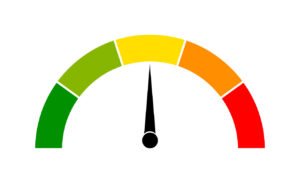Curating the week in wellness July 19–July 23, 2021: The downsides of ‘checking in,’ top financial goals for women, and more
The week’s essential content and fresh industry pickings for those dedicated to employee well-being.

Greetings, wellness pros.
We hope you enjoy this fresh collection of thought-provoking articles, savvy tips and takeaways.
As always, please get in touch with any ideas, suggestions or feedback on how we can serve you better. We are grateful for all the excellent work you do, and we wish you continued health and success in all your endeavors.
1. Please read before touching someone’s base.
The Wall Street Journal has published a piece about the drain and pain of the “never-ending work check-in.” Reporter Rachel Feintzeig explains here:
The gist: We all have too many meetings, and the overload of ancillary pings can quickly cause burnout, stress, disengagement and turnover. As an uncertain future of work looms, will we learn from these mistakes—or just keep filling our calendars with more appointments? WSJ says those who plan to pursue a hybrid model should brace for a “mess.”
2. How managers can create their own well-being guide.
Gallup offers a handy guide for managers to bolster their own resiliency—while helping others, too.
The piece says, “When leaders fulfill the four needs of followers—a sense of trust, compassion, stability and hope—they are more likely to catalyze resilience and performance.” It goes on to list key steps:
First, focus on you, and ask yourself:
- What has changed for me since the COVID-19 outbreak? What hasn’t changed?
- What was I doing when I felt “at my best” recently?
Second, think about the team, and ask questions such as:
- What do team members say has changed for them, and what hasn’t?
- When has the team been at its best during the last week?
- How has the team used and applauded its collective strengths?
- Who can I best partner with to create positive change and move others toward action?
Third, align with the mission by asking:
- What are our company’s stable values? How am I living up to them?
- As a company, how have we capitalized on our strengths in the last seven days?
- How can we become even stronger in the days to come?
- What action(s) can I initiate today to cultivate our corporate strengths which, in turn, keep our culture alive?
Finally, prioritize clear and consistent communication. That’s the foundation upon which all business success rests, right?
Here’s more guidance on improving wellness-related communication.
3. Closing gaps between offerings and employee needs.
Benefits Pro writes about a study that finds, “Employers plan to expand wellness investments and offerings, but programs and communications may not align with employee needs.” The data shows:
- U.S. consumers identify a need for more support, saying that benefits offerings that would have the biggest impact on their health at this time are more guidance on exercise (30%), diet (29%), mental health (22%) and sleep (22%).
- The biggest health-related challenges employed adults are facing outside of work include not getting enough sleep (30%), lack of physical activity (30%), maintaining a healthy diet (27%) and increased stress or anxiety (26%).
Unfortunately, whether due to pressure to demonstrate ROI, lack of communication or perhaps an unwillingness to adapt, there’s a disconnect between what employers are investing in and what employees might actually want. Benefits Pro writes, “We are seeing a gap between what employers believe their people need, what they are providing and what their team is actually using,” adding:
“As work models shift and employers face another transition, there’s a growing need for tailored health and wellness offerings that make a true, measurable impact on employee health. Personalized, one-to-one guidance that integrates a whole-person approach, as well as data-driven evaluation of program impact can help employers better support their workforce and reach the employees who need health support the most.”
4. A roundup of reports on sustainability updates, DE&I progress and ESG initiatives.
For a bit of inspiration on demonstrating your company’s sustainability activities or philanthropic ventures, have a look at these heavy hitters’ recent reports:
5. Top 10 financial wellness goals for women.
Judith Ward, a VP with T. Rowe Price, shares guidance to boost financial wisdom and well-being, including:
- Plan for the ‘what ifs.’
- Make saving for retirement a priority.
- Establish mutual, shared financial objectives with significant others.
- Have money on the side.
- Ditch your most expensive debt.
6. Combating ‘The Great Resignation.’
A record number of employees have already quit their jobs, and millions more have their eyes on the nearest exit. What can you do to prevent a mass exodus of employees?
HR Executive says it’s all about flexibility and trust, adding that, “Employers need to give workers more autonomy to prevent them from walking out the door.”
7. Should your company weigh in on hot-button topics?
New data from Atlassian says yes, though it’s a bit of a tricky proposition. Fast Company sums up the key findings, noting that a rising number of employees say they’d sooner quit than work for a company they’re not proud of:
- 67% of U.S. respondents said companies should be as concerned about their social impact as they are with their bottom line.
- 77% said companies should take responsibility for their environmental impact.
- 45% of U.S. respondents “would consider changing jobs to get more access to remote work.” For millennials, that jumps to 56%.
- 38% said they would quit a job “if an employer acted in a way that didn’t align with their values.” That’s up 6 percentage points from last year.
For many workers, wellness and work/life balance would trump even a promotion or the prospect of earning more cash. Fast Company explains:
“Wellness and work-life balance also factored prominently in the survey results, with 64% of respondents saying they would consider turning down a job promotion to preserve their mental health.”
8. A warning about collecting biometric data.
HR Dive reports that employers such as Walmart and Topgolf “have recently paid out multimillion-dollar settlements to employees claiming improper use of their biometric data.”
The piece notes that this sort of litigious activity is relatively new—and that biometric privacy laws vary by state—but companies should anticipate a sharp rise in cases of this nature. HR Dive explains:
“Daming noted that the statute most commonly comes up in the employment context for situations in which employers require their workers to clock in and clock out using hand or fingerprint scans, but facial recognition software and other technologies also may be implicated,” adding that it’s crucial to be aware of third-party providers’ use of biometric information and to ensure you’re complying with BIPA.
9. How COVID-19 is transforming health benefits.
Health Payer Intelligence has a good piece that examines how the pandemic is forcing companies to adapt to support workers.
The piece parses data that shows a downward trend of offering financial incentives for participation, and an uptick in investments in mental health. It also offers a reminder that employee feedback should shape every aspect of your program:
“For employers gauging how best to leverage their resources in order to support employees transitioning back to the workplace or to a hybrid model, Shebel recommended partnering with employees. Surveying employees to discover their health benefit priorities, connecting with employee resource groups, and conducting focus groups can help clarify employees’ needs.”







